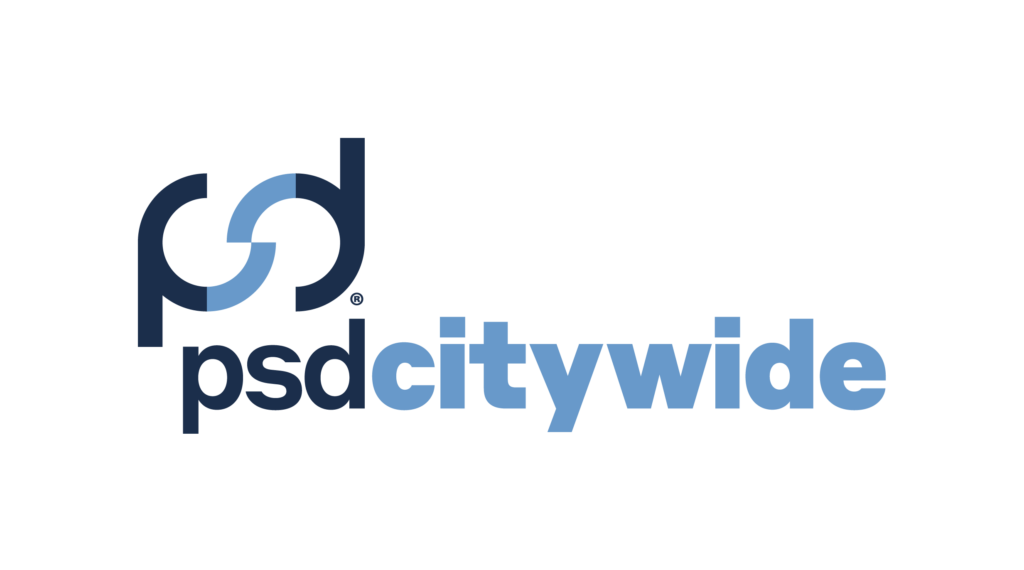Is your city’s strategic budget being shaped by professional expertise or short-term political interest?
The true value of a professional city manager extends well beyond politics. They deliver the expert oversight, strategic planning, and disciplined execution needed to guide local government with a long-term vision. The ultimate game-changer, though, is the advanced city management software that empowers them.
Citizen expectations reinforce this shift: A recent survey found 87% of Canadians expect fully digital public services by 2026, mirroring the efficiency of companies like Amazon and Uber. Also, the 2024 Granicus Service Delivery Benchmark Report highlighted that 80% of government leaders prioritize improving internal processes, recognizing the essential link between staff efficiency and service speed. This integrated software, which manages finances, permits, maintenance, and public services, transforms vision into reality, driving tangible cost savings and delivering a clear Return on Investment (ROI) for the public.
How Integrated Municipal Software Transforms Operations
Technology isn’t a cost, but a transformative operational investment. Professional city management succeeds by driving local government efficiency, and the secret is implementing integrated enterprise platforms that swap disconnected, outdated systems for a single, unified source of truth.
This transformation is the key to maximizing your budget’s impact. By eliminating departmental data silos, redundant manual work, and fragmented communication, these systems streamline processes and reduce unnecessary spending. Now, with centralized data, automated workflows, and real-time collaboration, every team, from finance to public works, is operating with more precision, saving time and labor costs over time.
The most important financial benefit stems from adopting proactive municipal asset management. Your city can finally stop the costly “fix-it-when-it-breaks” maintenance cycle. Instead of facing emergency bills for burst water mains or road failures, predictive maintenance and lifecycle planning tools enable cheaper, preventative repairs. This strategy is key to cost savings: the U.S. Department of Transportation’s Federal Highway Administration (FHWA) notes that applying Life-Cycle Cost Analysis (LCCA) delivers the lowest practical cost over time for infrastructure, ensuring a measurable Return on Investment (ROI).
Technology can also reduce administrative costs by automating routine tasks like processing permits, licensing, and scheduling inspections, freeing up your municipal workforce to be more agile and strategic.
Municipal Software Modules: Data Governance and Compliance
The power of municipal software isn’t just about integration; it’s about the trust and security it provides. A City Manager should make sure their municipal asset management software is comprehensive and compliant, built around core, connected modules that help manage all aspects of operations, including:
- Budgeting & Planning: The central solution for budgeting, forecasting, and expense tracking.
- Permitting, Planning & Licensing: Automated workflows for permitting, planning, licensing and compliance.
- Asset & Maintenance Management: Detailed asset inventories, work order and service request tracking, preventive maintenance scheduling and lifecycle planning.
- GIS (Geographic Information System): Visual intelligence layer that maps all municipal assets and data, providing spatial context essential for planning, public works, and emergency response.
- Reporting and Analytics: Tools that provide real-time dashboards and actionable insights into performance, efficiency, and resource allocation across all departments.
- Citizen Engagement: An online portal for submitting service requests, permit applications and more.
This integrated system addresses two major concerns from council and stakeholders:
- Eliminating Data Silos: By establishing a single source of truth, it lessens the risk of staff making decisions based on incomplete or conflicting departmental data.
- Ensuring Data Integrity and Security: Modern platforms include robust security protocols, audit trails, compliance features and reporting essential for protecting sensitive resident and financial data against cyber threats and maintaining regulatory standards.
The Hard Numbers: Proving Your ROI
The ROI of professional management and technology isn’t just a concept; it’s entirely quantifiable. The value is measured in hard numbers: cost reduction, time savings, and extended asset life.
Key metrics that demonstrate the city management benefits include:
- Reduced Unplanned Failures: Moving past reactive fixes to a data-driven, preventive maintenance strategy cuts the high cost of last-minute fixes and emergency service calls. The U.S. Department of Energy (DOE) reports that predictive maintenance delivers significant ROI, including a 70–75% elimination of breakdowns, a 25–30% reduction in overall maintenance costs, and a 35–45% reduction in asset downtime.
- Decreased Administrative Costs: Automated workflows and digital approvals eliminate the need for paper-based processes, reducing the time and resources spent on manual, redundant tasks.
- Enhanced Communication & Engagement: These platforms help with engagement, allowing residents to report issues and track service status digitally through an online citizen portal. Internally, they foster real-time collaboration across departments, ensuring data-backed decisions and breaking down internal silos.
- Improved Data Accuracy: A single, reliable data source leads to more accurate and dependable budgeting and forecasting. It also streamlines the process of collecting fees for permits and licenses, reducing errors and ensuring timely payments.
- Improved Resource Usage: Integrated systems provide a clear picture of asset condition and risk, allowing managers to allocate labor, equipment, and funds where they are most needed, eliminating wasted effort and resources.
- Increased Transparency: Real-time dashboards and automated reporting provide leaders with the data to make more informed decisions and transparently demonstrate value to their community, building public trust.
Turning Savings into Service for Residents
When a city runs on professional management and integrated technology, the savings and efficiencies gained are ultimately returned to the community. This results in direct improvements to residents’ quality of life:
- Better Infrastructure: Proactive asset management means the roads, parks, and water systems residents use daily are safer, more reliable, and better maintained. Fewer unexpected failures translate into more consistent service delivery.
- Faster, Easier Service: Automation speeds up resident-facing processes. Digital platforms allow citizens to submit permit applications, renew licenses, and pay fees without a trip to city hall, fulfilling the demand for convenient digital service.
- Reinvested Tax Dollars: The significant cost savings achieved by eliminating waste and reducing administrative expenses can be reinvested into community priorities, such as enhancing public transportation, improving parks, or expanding essential social services.
- A Voice That Is Heard: Enhanced digital communication provides more ways for residents to report issues (like potholes or broken streetlights) and track the status of those requests, ensuring greater accountability and responsiveness from city staff.
The Path Forward: Implementation and Change Management
Investing in new technology is only the first step; staff adoption is essential to maintaining success for years to come. A clear strategy for implementation and change management lessens risk and helps the workforce use the system to its fullest ability.
- Phased Implementation: Rather than attempting an all-at-once transition, successful local governments typically implement modules (e.g. Asset Management first, then Maintenance) or onboard departments (e.g., Finance first, then Public Works) in phases, keeping disruption to core services minimal.
- Staff Training: Comprehensive training programs are key to guaranteeing staff adoption and buy-in, converting potential resistance into empowered, knowledgeable users who drive efficiency.
- Vendor Partnership and Scalability: Choosing a vendor with public sector expertise ensures the software evolves with future compliance needs. The platform should be scalable to handle population growth and the addition of new municipal services.
- Measurable Milestones: Defining key performance indicators (KPIs) for the transition (e.g., permit processing time, work order completion rates) establishes accountability and provides the City Manager with real-time data on the project’s success.
- Optional: In-House Implementation Teams: Ideally, for accountability and deep product knowledge, your vendor should use their own hands-on implementation teams rather than relying on third-party contractors to implement the software. This ensures product knowledge is retained internally, simplifying future system updates or module additions.
Real-World Success: Regional District of Nanaimo
Municipalities across North America are already seeing tangible results from municipal software. A great example is the Regional District of Nanaimo in British Columbia, which adopted PSD Citywide’s centralized municipal software solution to improve its financial planning processes.
The District manages over 100 distinct service budgets, making its previous Excel-based budgeting process time-consuming, tedious, and prone to mistakes. By implementing Citywide Budgeting, they achieved significant results:
- Substantial Efficiency Gains: The program took over the heavy lifting of combining independent service budgets, eliminating the need for staff to manually calculate and merge spreadsheets across departments.
- Enhanced Data Reliability: The centralized database integrated financials, vastly reducing the opportunity for error caused by sharing different Excel files.
- Increased Stakeholder Buy-in: Department managers gained easier and much earlier access to real-time budget information, allowing them to better track usage and take greater ownership of their financial performance.
This modernization resulted in extensive time savings, a reduction in errors, and a more effective, accountable use of taxpayer dollars.
Why PSD Citywide is the Leading Municipal Software Vendor
PSD Citywide offers a comprehensive suite of solutions tailored for public sector needs. Our platforms, including those for municipal asset and maintenance management, enable municipalities to centralize asset data, manage work orders, and implement a proactive maintenance strategy.
The right city management software can provide the foundation for growth and resilient public services. By embracing these integrated solutions, you can maximize taxpayer value and make sure your community thrives for years to come.



